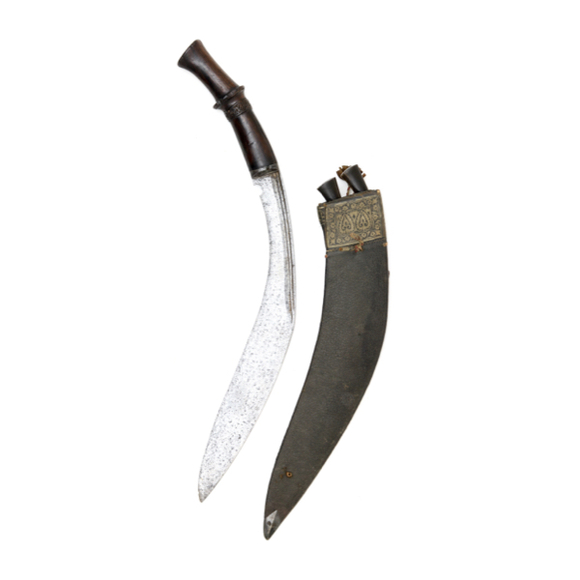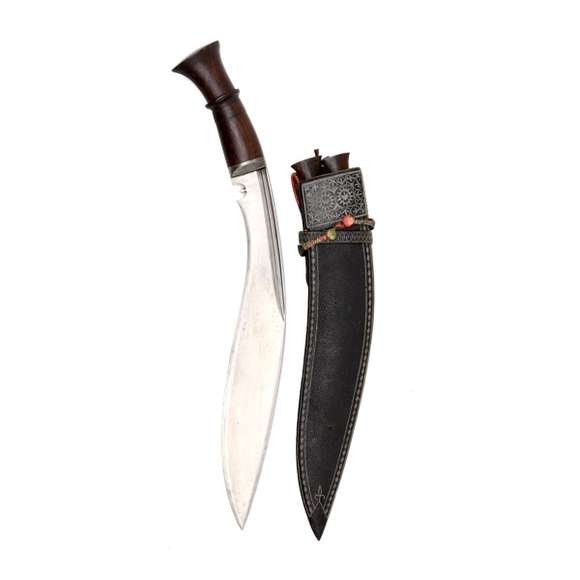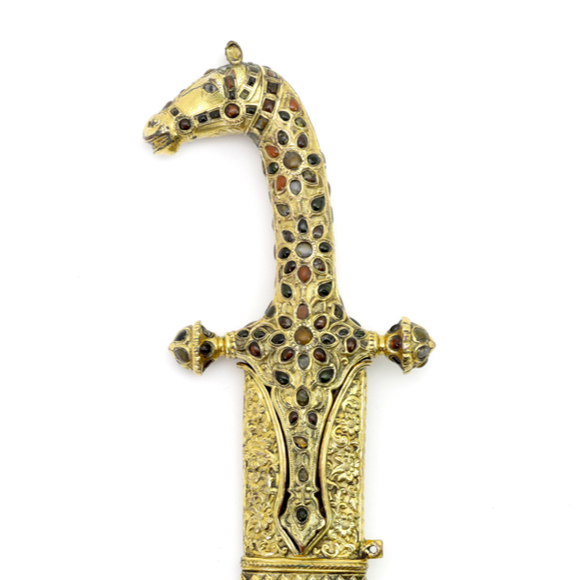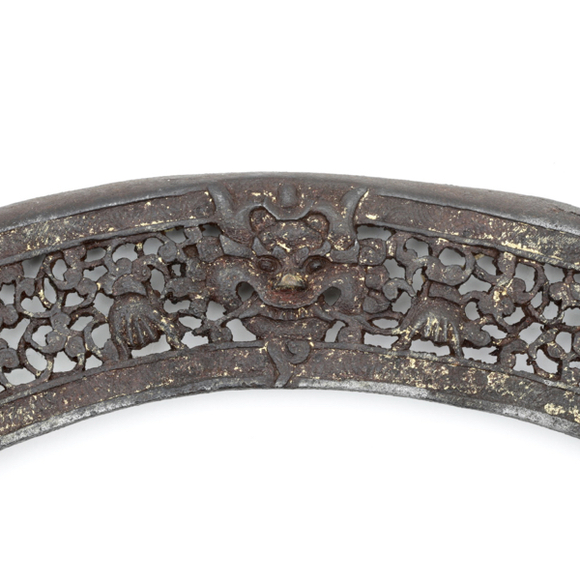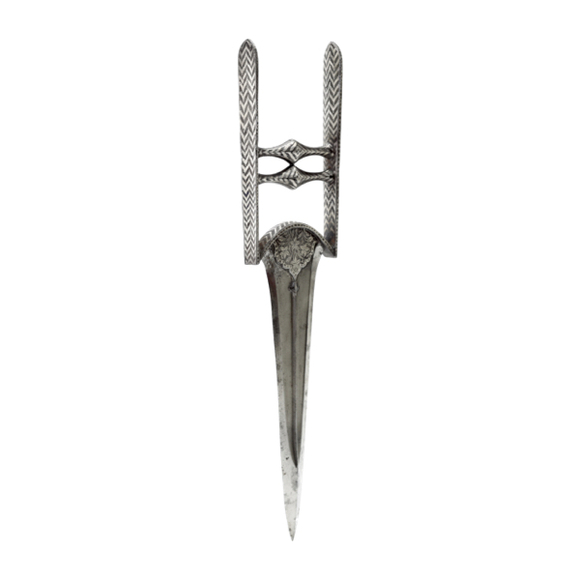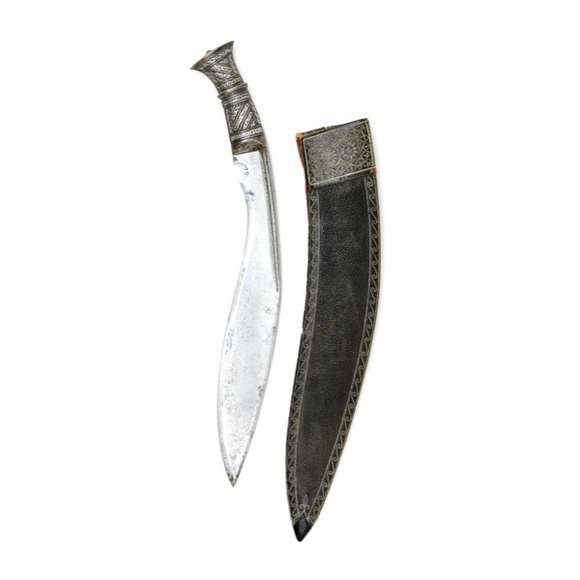Language: Hindu, derived from Persian
Source: Period account
Description
Tah-i-nishan (तह-ी-निशान) was used in northern India to describe the inlaying of metal with silver or gold.
To achieve this, a channel was cut into the metal, in which silver or gold was applied. Connaisseurs call this "true inlay" or "true damascening" in English, as opposed to "overlay" or "false damascening" where gold or silver only adheres to the surface of an object.1 Tah-i-nishan is, therefore, the best, most durable, and most prized means of decorating arms with silver or gold.
The word comes from the Persian tah-nishān (ته نشان) where tah means "to fold" and nishan "to mark".
 True inlay work on a Deccan katar.
True inlay work on a Deccan katar.
Sold by Mandarin Mansion in 2019.

True inlay work on a katar, possibly from Bijapur.
Sold by Mandarin Mansion in 2022.


A talwar hilt with true inlay.
Sold by Mandarin Mansion in 2022.
Use
Tah-i-nishan work is primarily associated with Indian work of the 17th to early 19th century. By the end of the 19th century, Hendley laments that the method is falling out of use in favor of low-quality superficial overlaying, primarily done for European tourists.2
Today, extant examples of true tah-i-nishan work are quite rare.
Notes
1. Thomas Holbein Hendley, C.I.E.; Damascening On Steel or Iron, as practised in India. W. Griggs & Sons, Ltd. London 1892.
2. Ibid. Pages 7-9.

